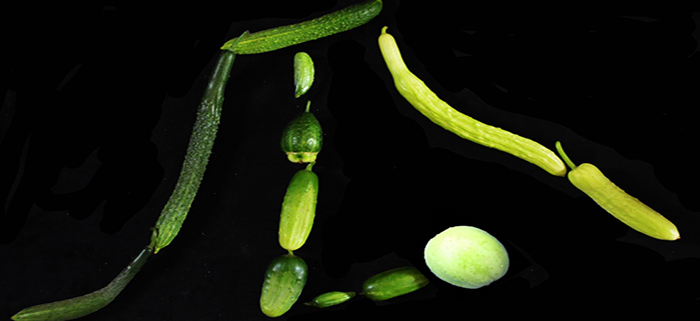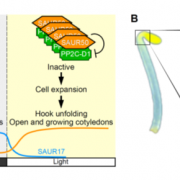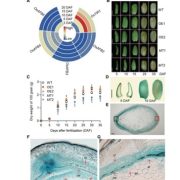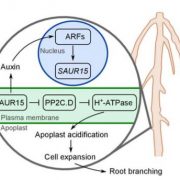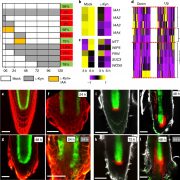Fruit Length Regulation in Cucumber
Zhao et al. identify a key regulator of fruit length variation in cucumber. Plant Cell https://doi.org/10.1105/tpc.18.00905
By Jianyu Zhao, China Agricultural University/University of Wisconsin-Madison;
Li Jiang, China Agricultural University/Nanjing Agricultural University;
Gen Che, China Agricultural University
Xiaolan Zhang, China Agricultural University
Background: Cucumber is one of the top 5 vegetable crops throughout the world, and cucumber fruit is consumed freshly or processed into pickles. Fruit length is an important agronomic trait that affects yield and product appearance, and varies from 5 cm to 60 cm in different cucumber cultivars. Cucumber was domesticated from its wild relative C. sativus var. hardwickii, bearing small and spheroid fruits of about 3–5 cm in length. East Asian cucumber bears extraordinarily long fruit (more than 35 cm). Even though several QTLs regulating fruit length have been identified in cucumber, only two candidates have been cloned and none have been functionally validated. The MADS-box transcription factor FRUITFULL (FUL) was shown to play an important role in fruit opening in Arabidopsis and in fruit ripening in tomato.
Question: What is the key regulator of fruit length variation in cucumber and how does it function? What is the role of FUL in cucumber and are there any functional differences between this protein in cucumber, Arabidopsis, and tomato?
Findings: Through analyzing the sequence data of 150 cucumber lines with different fruit length, we identified two alleles in CsFUL1 with a single non-synonymous substitution at 3393C-A. The CsFUL1A allele appeared specifically in the Asia long cucumber, whereas the CsFUL1C allele occurred randomly in cultivars, including wild and semi-wild cucumbers. Using transgenic methods, we found that decreased expression of CsFUL1A resulted in longer fruit and increased expression led to shorter fruit. No effect on fruit length was observed upon changes in CsFUL1C expression. Thus, CsFUL1A acquired its function as a repressor of fruit length during selection of Asian long cucumber. CsFUL1A directly represses CsSUP expression and thereby regulates cell division and cell expansion. Furthermore, CsFUL1A directly inhibits the expression of two auxin transporter genes, CsPIN1 and CsPIN7, reducing auxin accumulation. Our work identifies an important modulator of fruit length with potential applications in cucumber breeding.
Next steps: We aim to identify the upstream regulators of CsFUL1A in fruit length variation in cucumber, and to dissect the relationship between CsFUL1A and other fruit length genes.
Jianyu Zhao, Li Jiang, Gen Che, Yupeng Pan, Yanqiang Li, Yu Hou, Wensheng Zhao, Yanting Zhong, Lian Ding, Shuangshuang Yan, Chengzhen Sun, Renyi Liu, Liying Yan, Tao Wu, Xuexian Li, Yiqun Weng, Xiaolan Zhang. (2019). A Functional Allele of CsFUL1 Regulates Fruit Length through Repressing CsSUP and Inhibiting Auxin Transport in Cucumber. Plant Cell DOI: https://doi.org/10.1105/tpc.18.00905.
Key words: Auxin; CsFUL1; Cucumber; Fruit length


